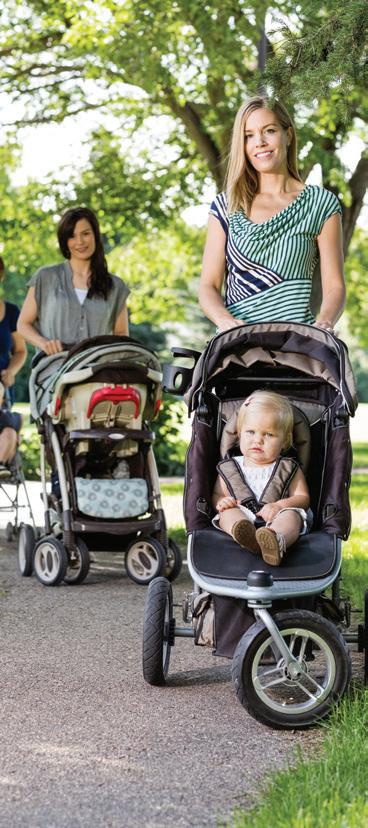
2 minute read
The Flu. Yes Again
yes again! T he REMINDERS AND UPDATES
by Dr. Rebecca Butler, Board Certified in Pediatrics by the American Board of Pediatrics
Advertisement
Surprise! The latest news is that the flu vaccine is a “mismatch” for some of the most common strains of the flu. A universal vaccine is in the works, but until then, it is important to recognize the signs and symptoms and provide supportive care quickly.
Symptoms of the flu in kids can include sore throat, muscle aches, congestion, fever, chills, and fatigue. If your child is feeling sick, help them feel better by encouraging rest and keeping them hydrated. You can also try these kid-friendly flu home remedies to give relief.
Home remedies to help soothe a child’s cough:
• Drink warm fluids: Warm liquids such as caffeine-free tea, broth, or hot water with lemon can help loosen up mucus and soothe a sore throat.
• Consider using a humidifier: Consider placing a cool-mist humidifier in your child’s room, near where they sleep, to help ease their breathing.
• Breathe in warm water vapors: Let your child breathe in water vapors from a warm bath or shower. This loosens mucus and calms your child before bed.
• Try icy treats: Give your child cold items like popsicles or ice cream.
• Saline and suction: A saline solution, such as a nose spray or mist, can help loosen mucus in the nose. Have your child blow their nose frequently, or if they are young, use a suction bulb to prevent drainage.
• Give a spoonful of honey (over age 1): A teaspoon of honey can help combat coughing but should only be given to children over the age of 1.
• Sleep/Rest: Encourage your child get plenty of rest and sleep to promote healing.
What temperature is a (high) fever for a child?
A normal body temperature is about 98.6°F. A temperature of 100.4°F or higher is considered a fever for a child. Keep in mind that everyone’s body temp fluctuates and is usually lower in the morning and higher in the evening.
When your child has a fever, it is a sign that their immune system is fighting off an infection. Reducing fever may relieve some discomfort and allow for an opportunity to hydrate and re-evaluate your child. Oftentimes, it is beneficial to allow your child to run a fever of 100.4 to 101-102 degrees. Increasing body temperature is what will stop the replicating and potentially allow a quicker recovery.
When should you worry about a fever?
Call your primary care physician if your child is:
Younger than 3 months of age with a temperature of 100.4°F or higher.
Age 3 to 6 months with a temperature up to 102°F and appears very lethargic or irritable.
Age 6 to 24 months with a temperature above 102°F, lasting more than a day with worsening symptoms.
The flu is highly contagious, and we should do as much as possible to prevent the spread. Wash your hands frequently, do not touch your face, stay clear of those who are coughing, and keep your children home if they are ill.
940.455.7200 | www.LantanaPediatrics.com Mon, Tues, Thurs: 7:30am-5pm | Wed: 7:30am-12:30pm | Fri: 7:30am-4pm | Sat: 9am-12pm 74 McMakin Rd., Ste. 100 • Bartonville, TX 76226













